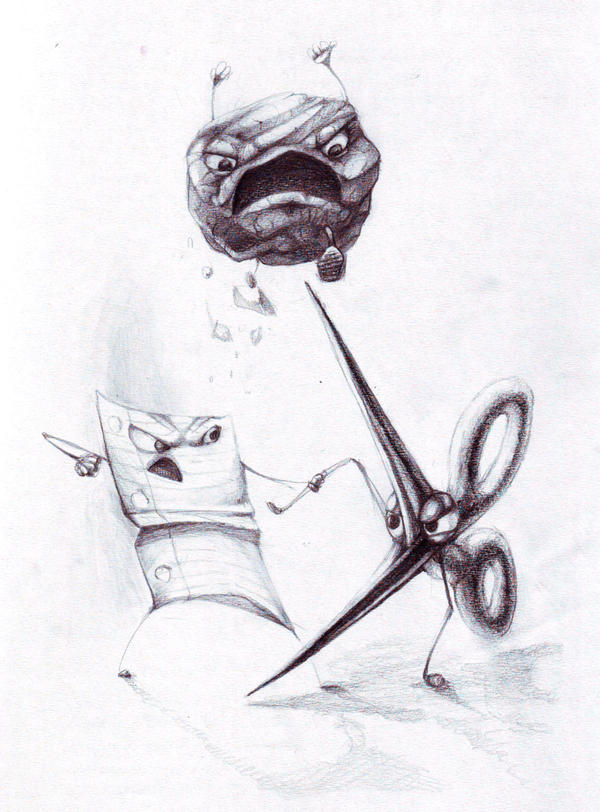Happy Friday friends! This post is about plot: what we traditionally think of as plot, and what other options exist in the world.
For starters, let's define the difference between plot and narrative structure. Plot is (loosely) the events that happen in the story. Narrative structure is the order readers experience the story events. Ingrid Sundberg does a good job of differentiating the two here. (May as well open that up in a new tab and leave it open, I'm going to be referencing her blog a lot today. She's pretty much already done what I wanted to do with this post.)
If your public education was like mine, you were probably introduced to a figure similar to this somewhere in your English classes:
This is the standard plot that we can fit most stories into. This describes a plot centered around conflict that follows a traditional three-act structure. It's very popular. In the Middle reviews a book that discusses using this structure as a form for your story, and it's one of hundreds available to writers. Ingrid does a good job outlining the traditional beats of this using Toy Story as an example. Chuck Wendig discusses plot and its structure in a humorous but definitely NSFW kind of way. If this form is so popular, or seems to be so popular, it calls into question why any other plot form has relevance.
For starters, let's define the difference between plot and narrative structure. Plot is (loosely) the events that happen in the story. Narrative structure is the order readers experience the story events. Ingrid Sundberg does a good job of differentiating the two here. (May as well open that up in a new tab and leave it open, I'm going to be referencing her blog a lot today. She's pretty much already done what I wanted to do with this post.)
If your public education was like mine, you were probably introduced to a figure similar to this somewhere in your English classes:
 |
| Fritz Freiheit |
For starters, if every story is based on one single structure, then only one story is ever told. We're committing intellectual incest if we allow this to be the only story in our repertoire. Just because most stories that come to mind follow a single structure doesn't mean that this is the ONLY structure, or that it is the CORRECT one. Stories have an incredible power: to take us outside our norms and expectations to find something new. The structure of the story is one way of doing this. (See Chimamanda Adichie's TED talk on the danger of a single story. She's not discussing plot structure, but the message is still the same.)
Also, if this is the only acceptable story structure, it sets up some unseemly ramifications. Ingrid really blows it out of the water on this one.
Lastly, this structure doesn't work for every form of storytelling. Krystina Madej discusses this in depth, particularly in relation to the growing number of interactive stories after the introduction of video games.
Enough hating on the "universal story", I'll now introduce alternative plotting methods with examples. See Ingrid's Part 1 and Part 2 pages for more.
Daisy-chain plot
Multiple characters, no central protagonist, all character narrators connected by a single object. (EX: the novel Cloud Atlas, the film The Red Violin)
Ensemble plot
Multiple character's storylines are shared to give a picture of a place/event rather than one character with a goal. (EX: the film Crash, the novel World War Z)
Repeated action plot
A character repeats the same actions again and again with different results. (EX: the novel Before I Fall, the film Groundhog Day)
Repeated event plot
An event repeats over and over again, we experience it through different characters to gain more insight. (EX: the film Vantage Point)
Symbolic juxtaposition plot
Kind of self-explanatory. The plot is a series of thematically related elements rather than one character or one event, and the themes introduced and implied with this sequence forms the plot of the story. (EX: the film The Tree of Life, the novel Criss Cross)
 |
| VibblesAgain |
So there are some options. Unfortunately, many of these plots still center on conflict. According to this awesome article featured on the tumblr still eating oranges this is definitely a Western/Anglo/American idea. The author outlines the Chinese and Japanese plot structure called kishōtenketsu, which is not centered around a conflict.
Can you think of more examples of non-traditional plots? Why do you think that the "universal story" is so popular in our culture when there are several options for plot structure?
I'm not sure of the name of this type of plot/narrative structure, but I rather like the disjointed story telling of the film "21 Grams" by Guillermo Arriaga and the novel "Three Twenty Dollar Bills" by Laurel Hanson. The narration jumps back and forth through a timeline, and the central idea of the story isn't realized until just about the half-way point.
ReplyDeleteI'm not familiar with those stories, I'll have to check them out. Thanks for sharing!
DeleteIm doing a summer project for 8th grade advanced english. This was insanely helpful. Its really interesting too, I think I'll send it to my teacher. Thanks!
ReplyDeleteMementos is a movie that follows an amazingly confusing, complex, and masterful plot structure.
ReplyDeleteI am very greatfull to you as you shared this.I am recently developing associate app spotify web
ReplyDeletethat is you may have an interest to seem on that :